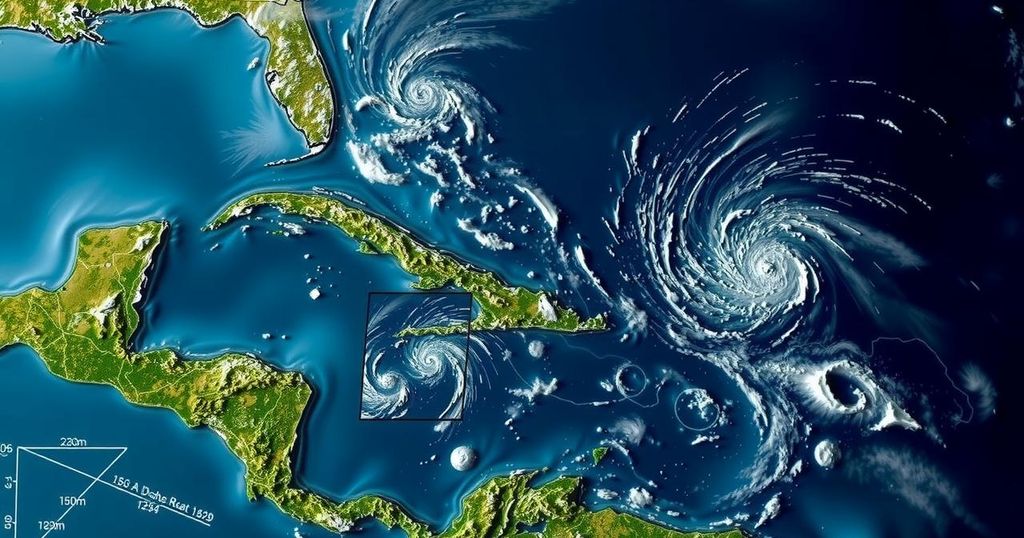The 2024 Atlantic hurricane season concluded with 11 hurricanes, notably Hurricane Beryl, which became the first Category 4 hurricane in June and intensified to Category 5 in July. Hurricane Helene was the deadliest storm with over 200 fatalities and extensive damages estimated at $48.8 billion. Climate change is contributing to unusually warm ocean temperatures, influencing hurricane formation and intensity.
The 2024 Atlantic hurricane season concluded on Saturday, with a total of 11 hurricanes forming, significantly surpassing the average of seven. This season brought extensive destruction far beyond the Gulf Coast, making it a notably hectic period due to elevated ocean temperatures. Throughout the season, eight hurricanes impacted land across the U.S., Bermuda, Cuba, and several Caribbean islands.
One of the most remarkable events was Hurricane Beryl, which became the first Category 4 hurricane on record to develop in June, impacting Carriacou in Grenada, resulting in fatalities and destruction of local agriculture and infrastructure. Furthermore, Beryl escalated into the earliest recorded Category 5 hurricane in Atlantic history on July 1. This is atypical, as most major hurricanes do not emerge until after September 1 according to analyses by the National Hurricane Center.
In September, Hurricane Helene struck, resulting in over 200 fatalities and catastrophic damage across the southeastern United States, primarily affecting North Carolina. The financial toll is estimated at approximately $48.8 billion, as the storm devastated homes and agricultural systems across multiple states, including Florida and Georgia.
October saw Hurricane Milton rapidly intensifying to maximum winds of 180 mph, making it among the most powerful hurricanes documented in the Gulf of Mexico, trailing only Hurricane Rita. Areas around Helene and Milton recorded rainfall levels up to threefold their usual monthly totals for September and October, resulting in records for cities such as Asheville, Tampa, and Orlando.
In November, Hurricane Rafael emerged with winds reaching 120 mph, making it nearly the strongest November hurricane on record in the Gulf. Rafael also struck Cuba as it struggled with aftermath from Hurricane Oscar.
Meteorologist Brian McNoldy emphasized the connection between climate change and hurricane intensity, noting that rising ocean temperatures contribute to both the timing and magnitude of storms. He remarked, “I do not ever point to climate change as causing a specific weather event, but it certainly has its finger on the scale and makes these extreme storms more likely to occur.”
The Atlantic hurricane season typically runs from June 1 to November 30, during which tropical storms and hurricanes form over warm ocean waters. The frequency and intensity of these storms are influenced by environmental factors, including atmospheric conditions and ocean temperatures. Climate change has been a critical area of study, suggesting that warmer ocean temperatures can lead to more frequent and powerful hurricane activity.
The 2024 Atlantic hurricane season has proven to be extraordinary, with an unprecedented number of powerful storms causing extensive devastation across various regions. The strong correlation between rising ocean temperatures and increased hurricane activity raises important considerations regarding climate change’s influence on future weather patterns. As the season concludes, the impacts of these hurricanes linger on communities and economies affected by their intensity and frequency.
Original Source: wsvn.com






